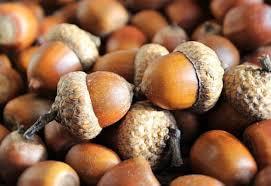Spreading your yard’s acorns fortifies our ecosystem!

Oaks support more life-forms than any other North American tree genus. These large native trees provide food for birds to bears, as well as countless insects and spiders among an enormous diversity of species.
As Douglas W. Tallamy, entomologist and professor at the University of Delaware writes in his 2021 book - “The Nature of Oaks: The Rich Ecology of Our Most Essential Native Trees” - oaks are a central life form upon which so many other species in the ecosystem depend, and the planting (or not removing) oaks is a powerful call to action for individual homeowners.
Hundreds of insects and caterpillars feed on oak leaves, and those insects in turn feed birds, mammals, amphibians, reptiles and even other insects. In Fall and Winter, acorns feed many of them all over again. Because so many predators eat the creatures that eat the acorns, a good year for oaks is a good year for everybody. “No other tree genus supports so much life,” Dr. Tallamy notes.
So, how can we help?
Of course, we can purchase oak seedlings from local nurseries, but oaks do better when planted from acorns and now is the time to collect them. Though acorns from red oaks germinate in the Spring, acorns in the white oak group send out a taproot soon after falling, which makes Fall the ideal time to begin their growth.
We can certainly pot up seedlings from acorns gathered in our yards. However, a policy of “benign neglect” might be enough. A single blue jay can collect 3,000 to 5,000 acorns a year, and often stores them by pressing them into soil. Fortunately, blue jays and squirrels don’t always remember where all their acorns are buried for later consumption!
Read the essay below - “Why We Should All Be Chasing Acorns” by New York Times columnist Margaret Renkl, October 17, 2022
| Attachment | Size |
|---|---|
| 157.39 KB |

